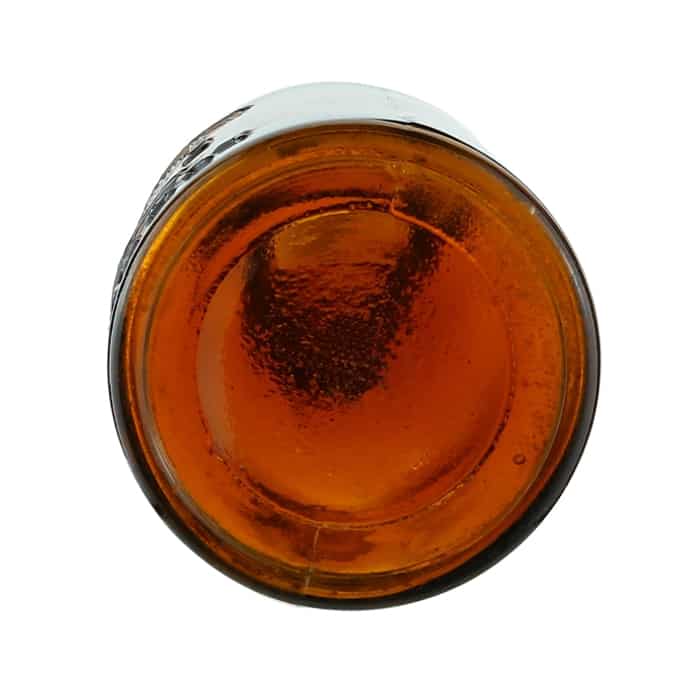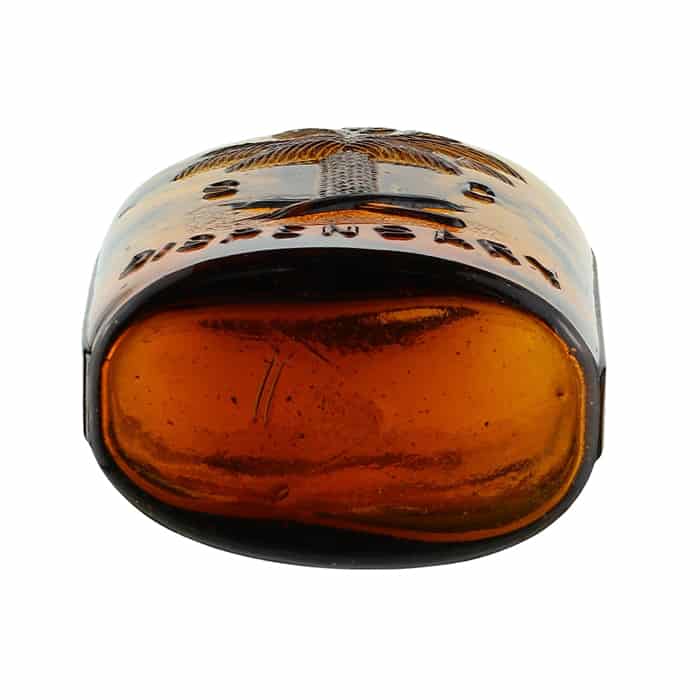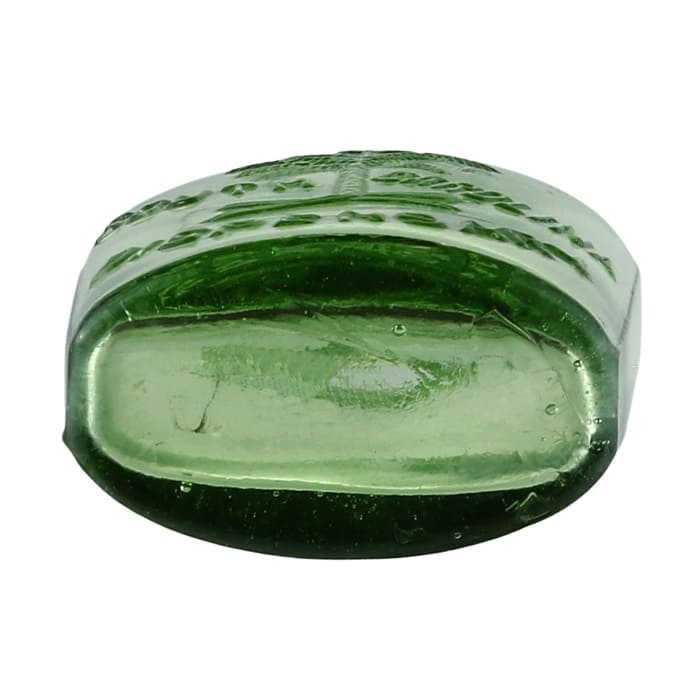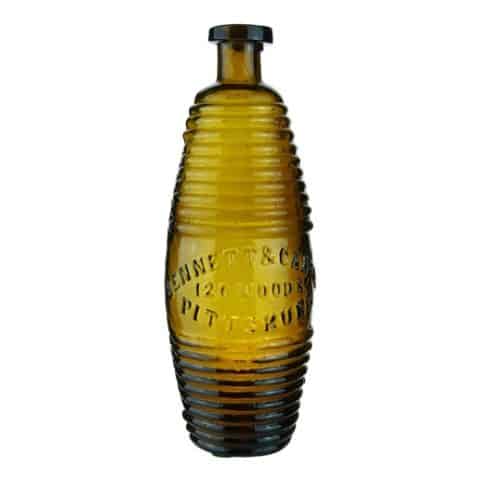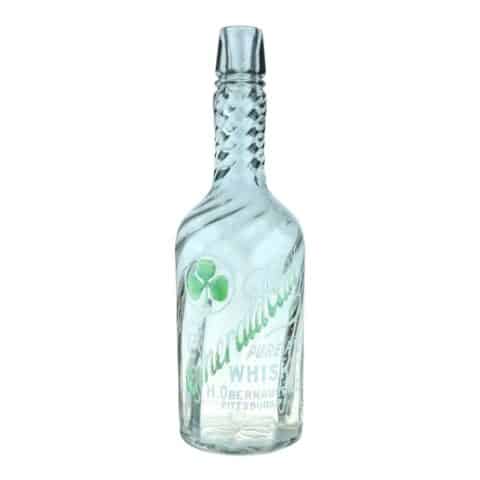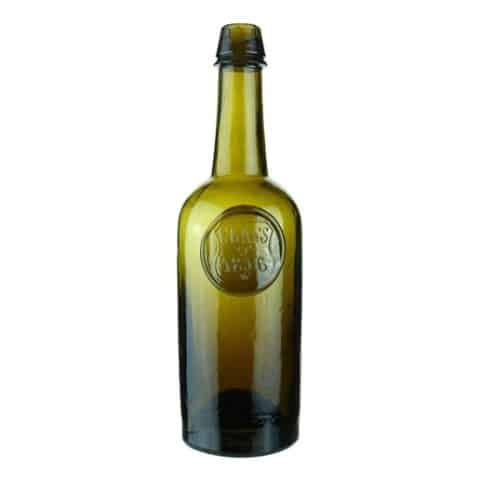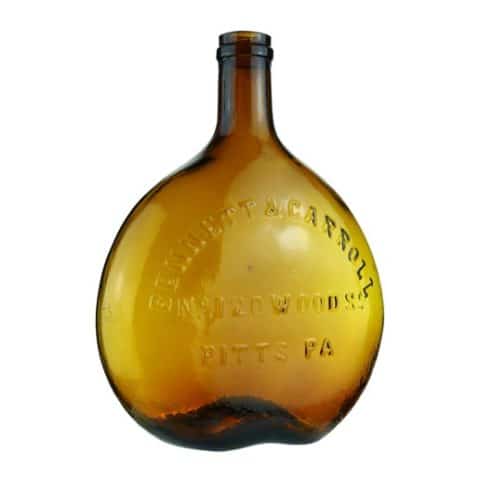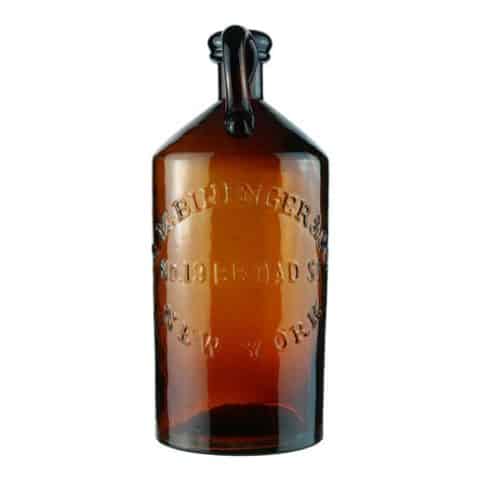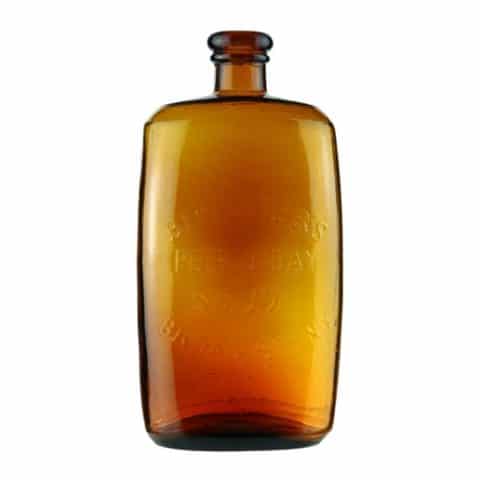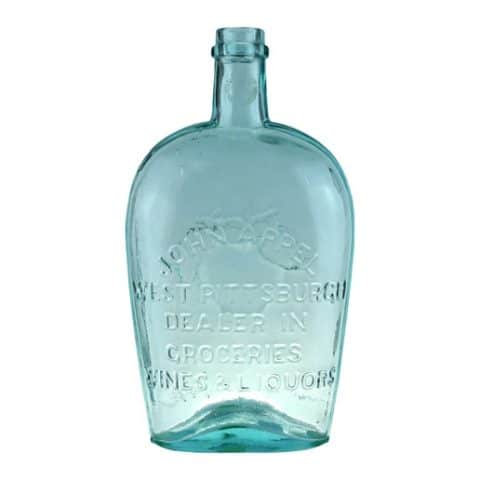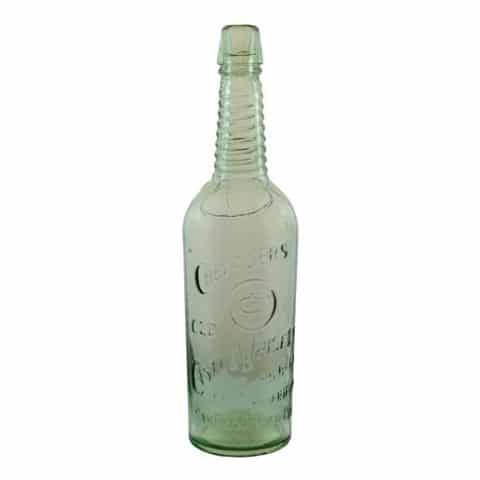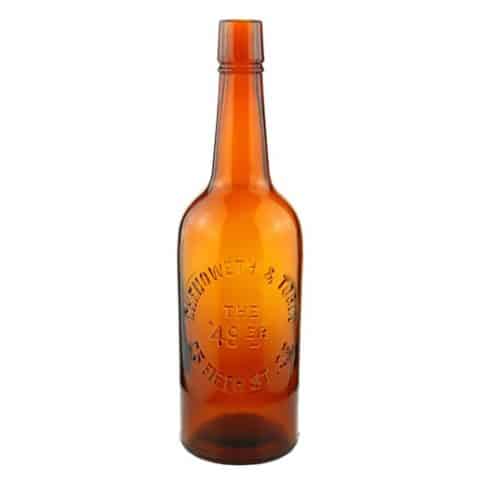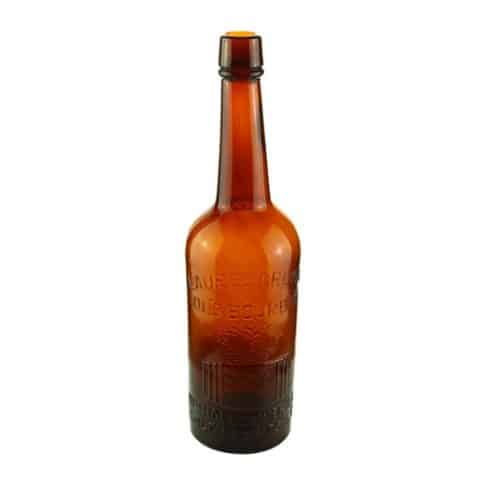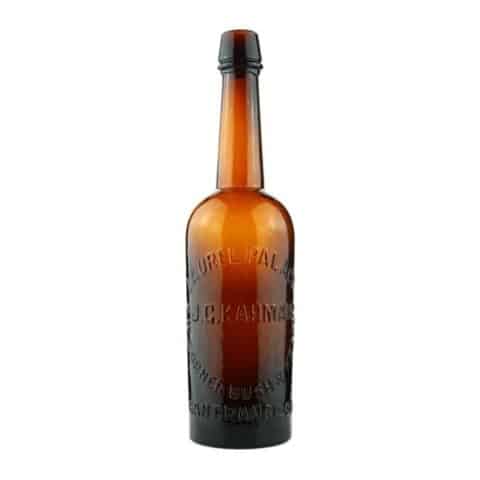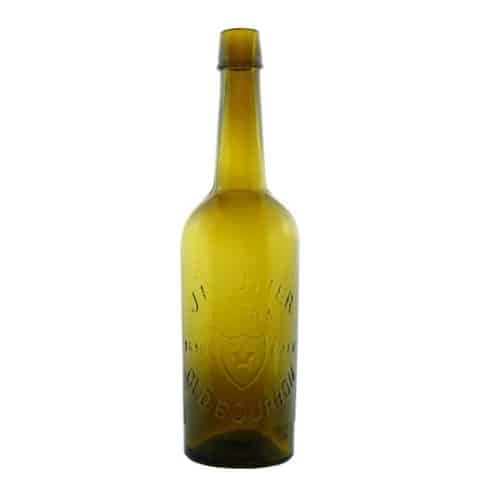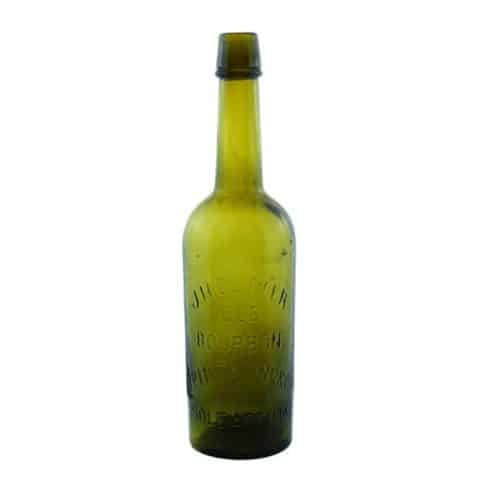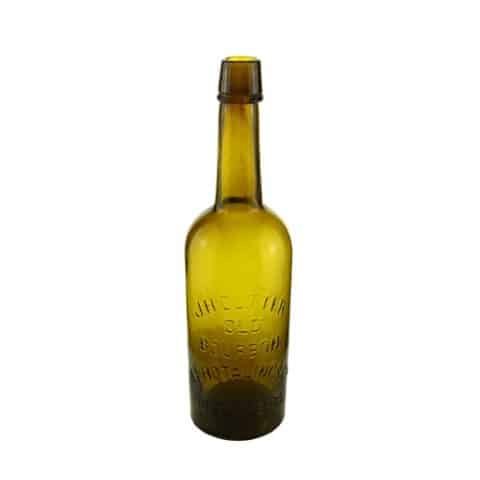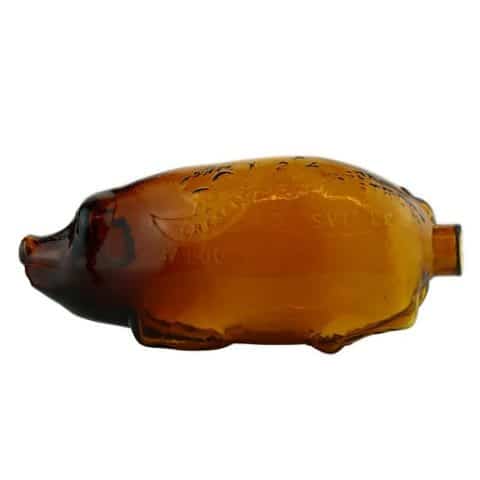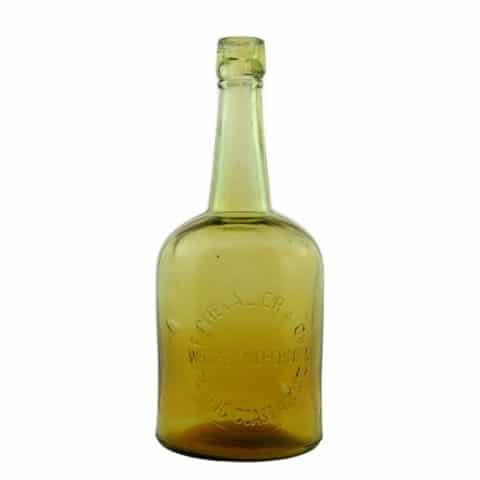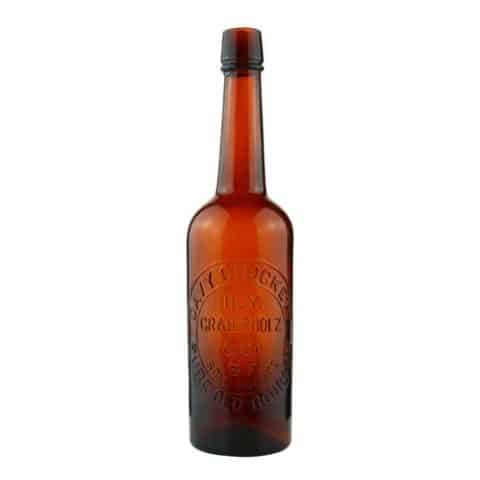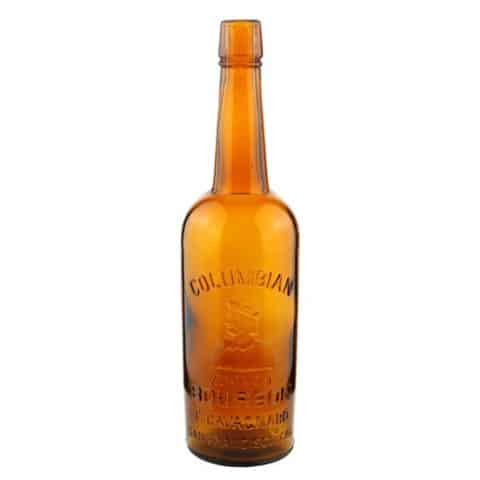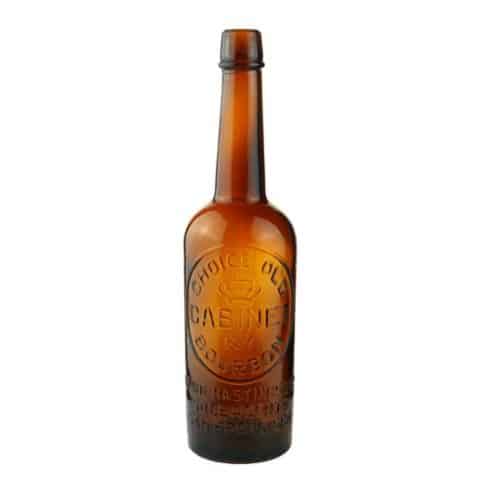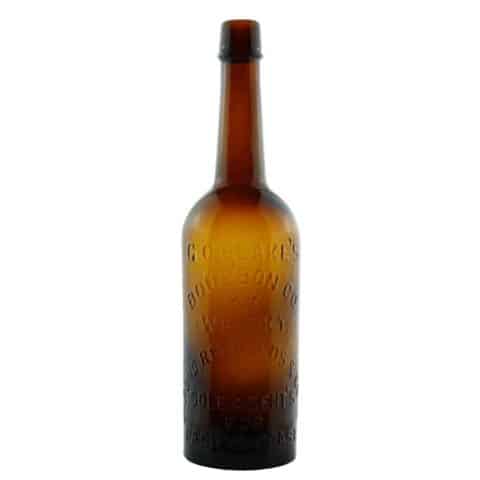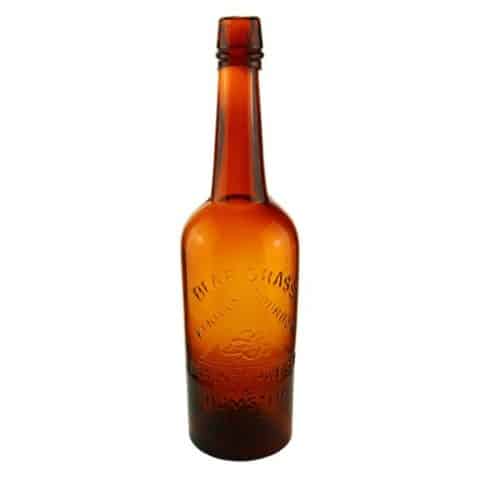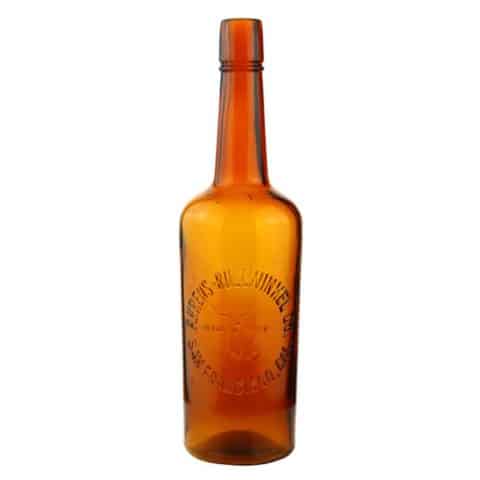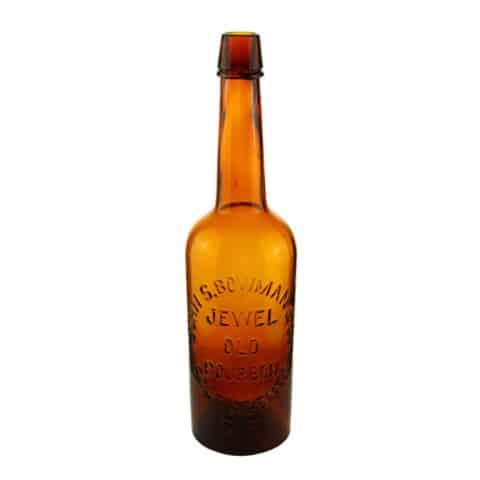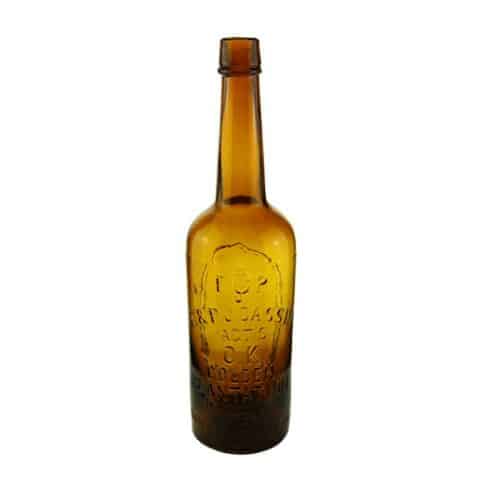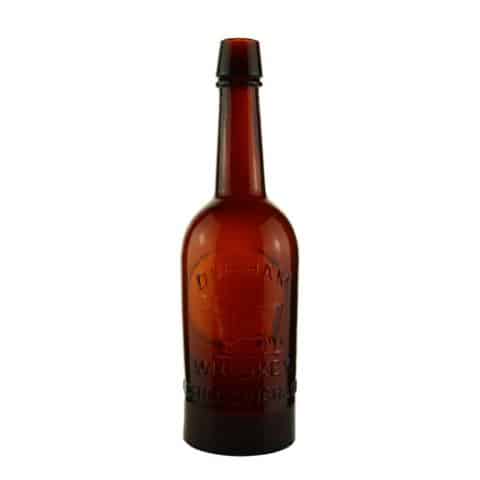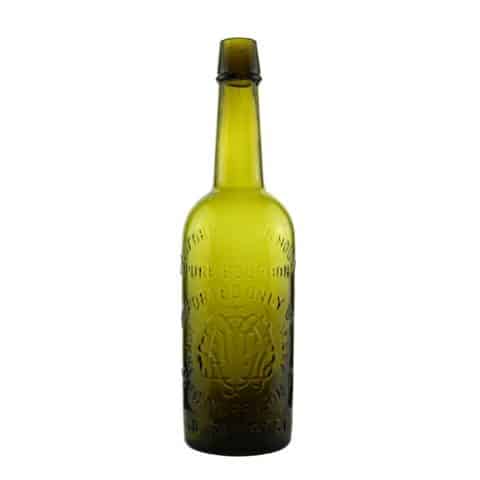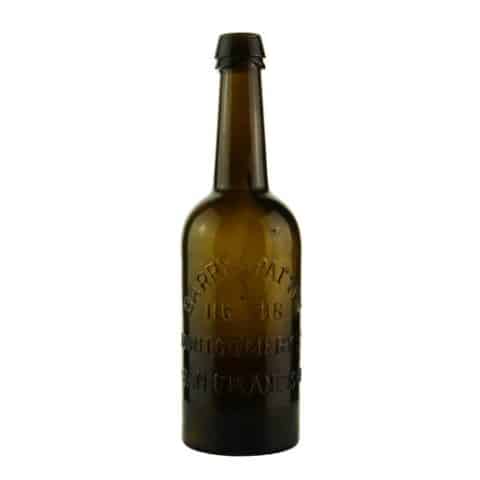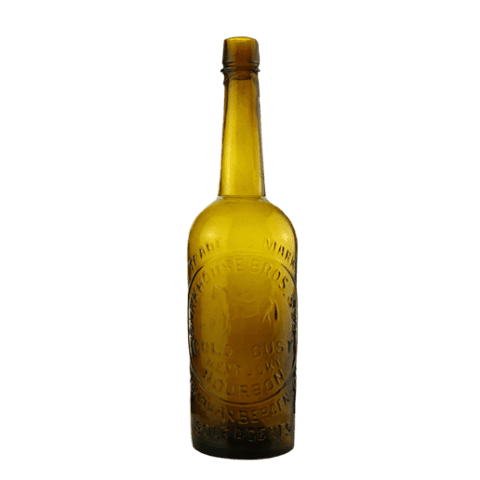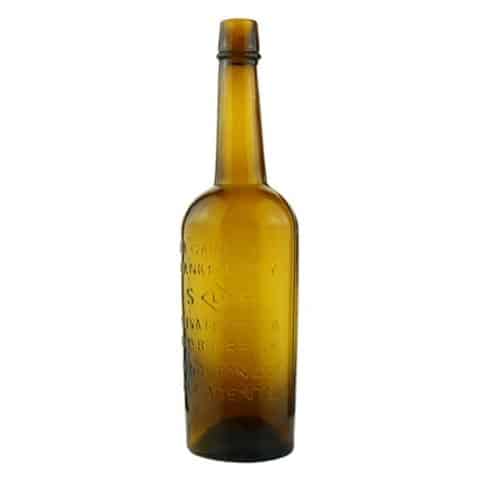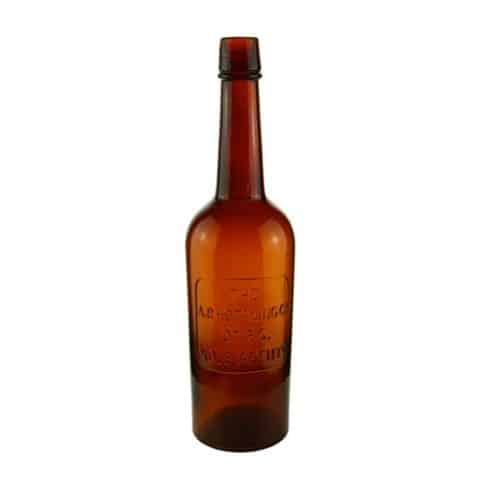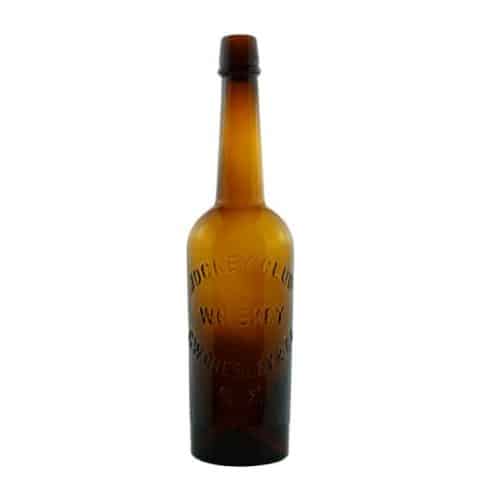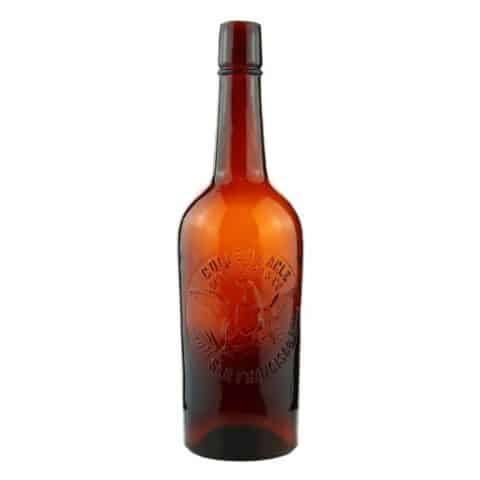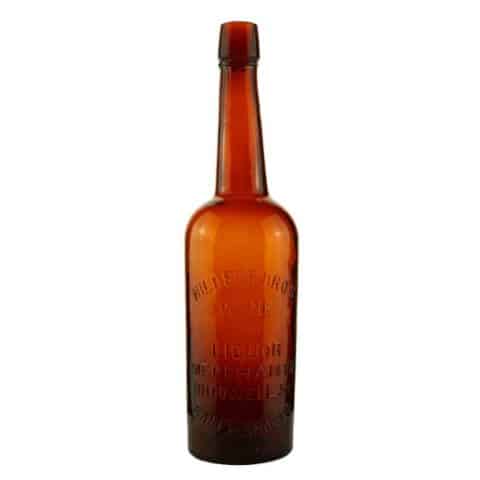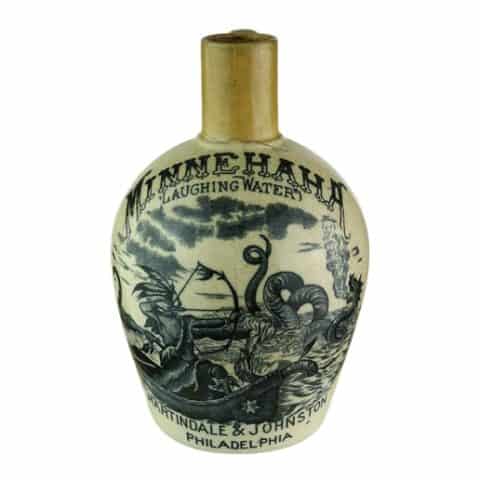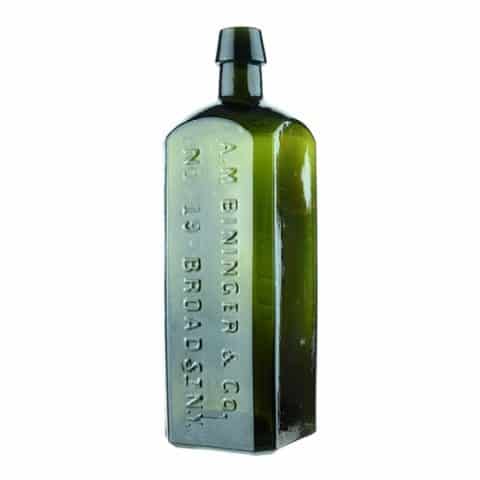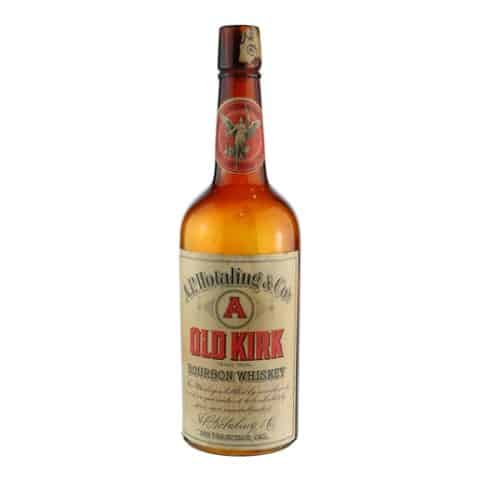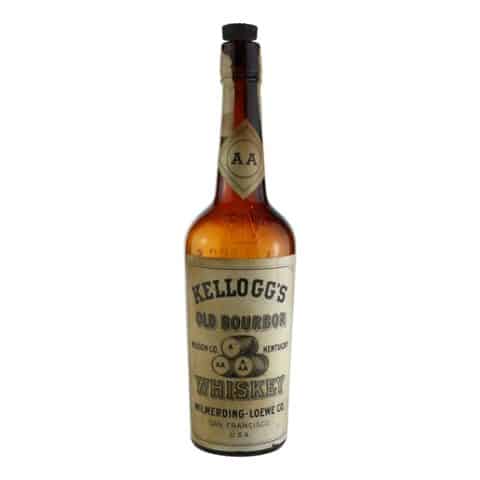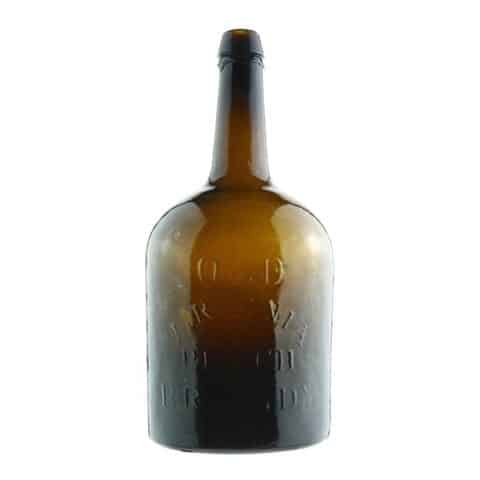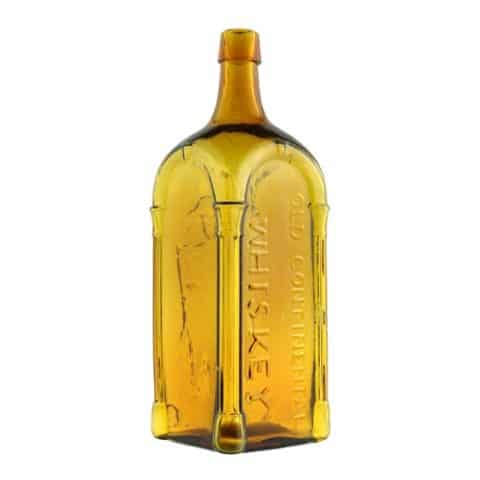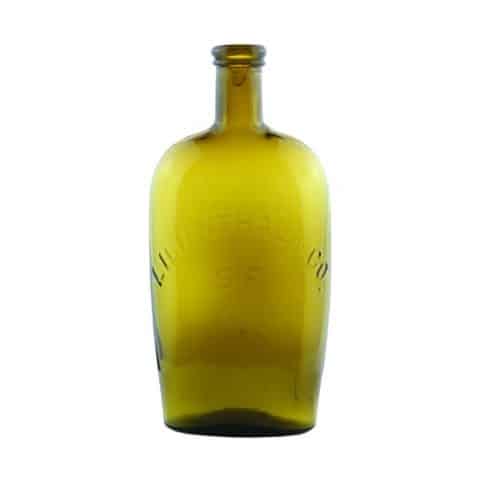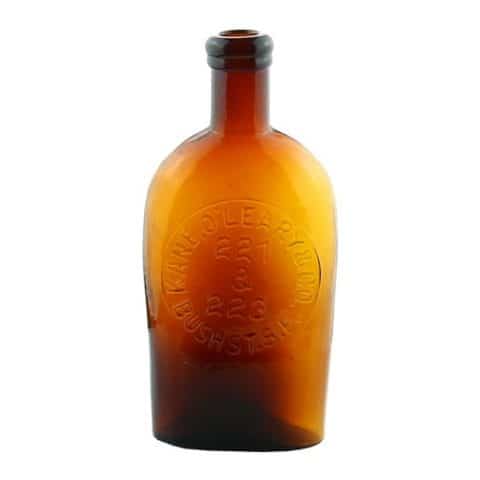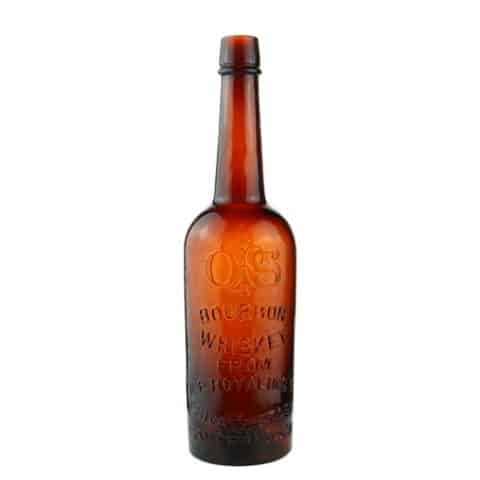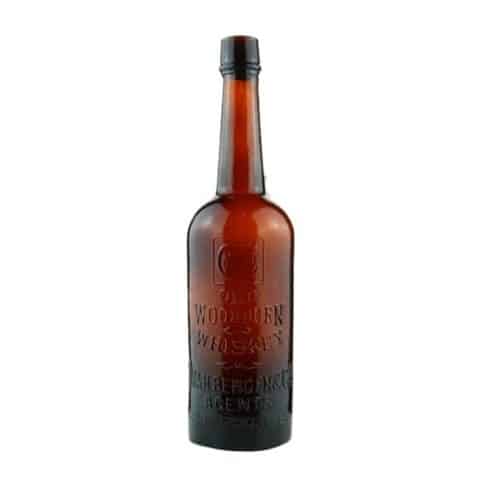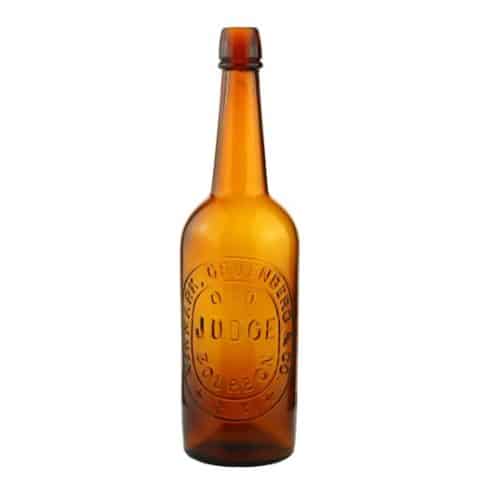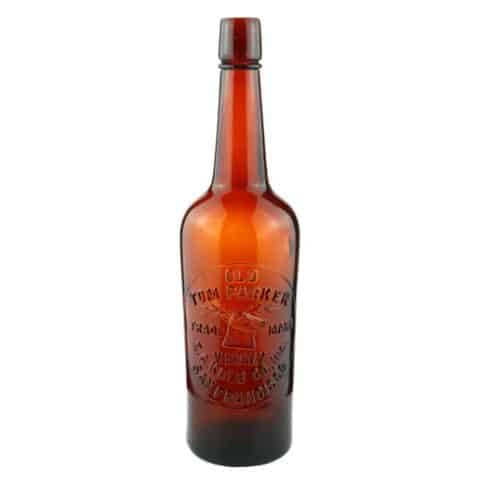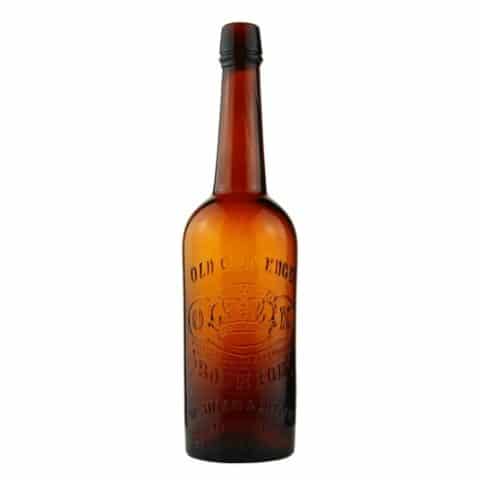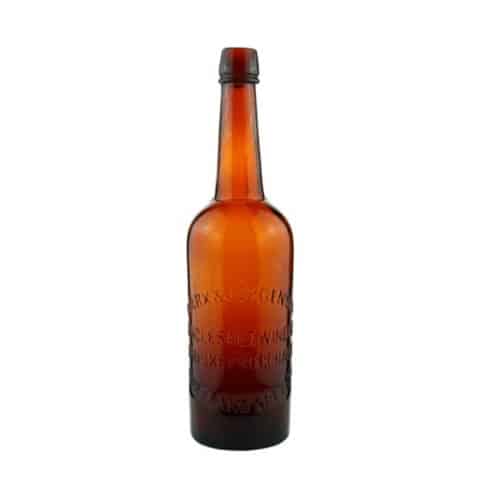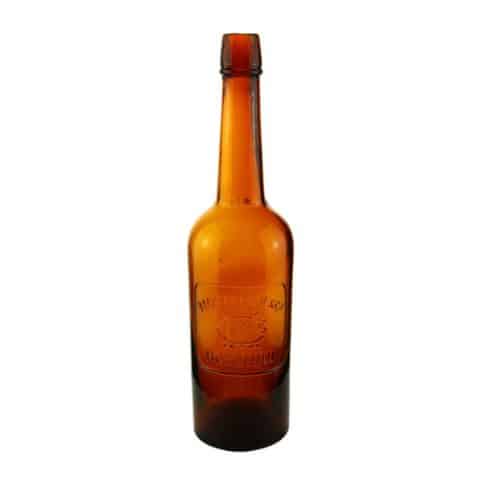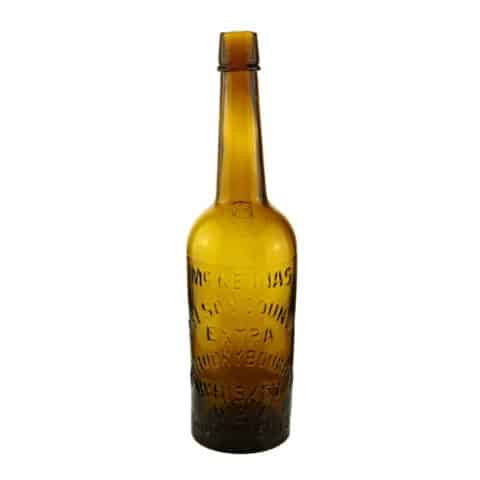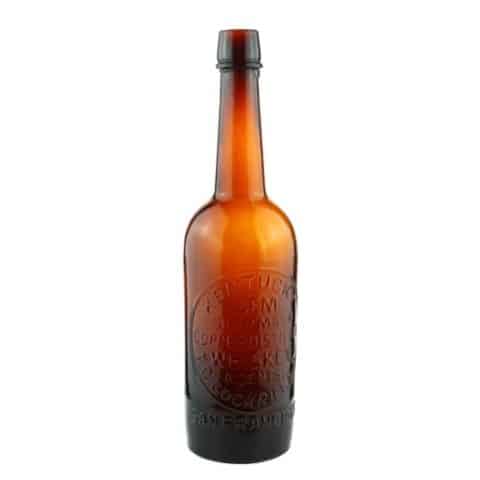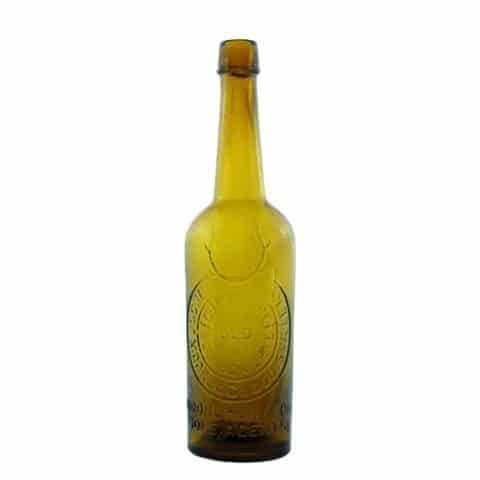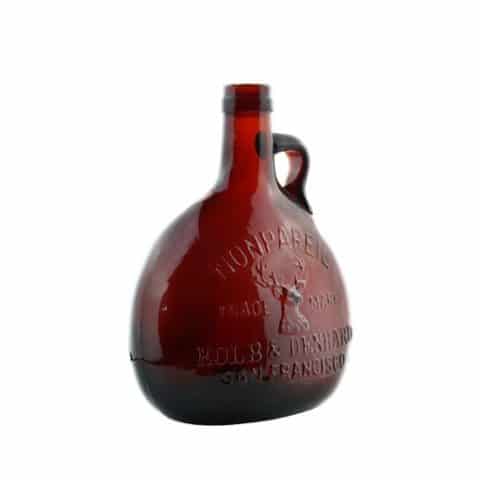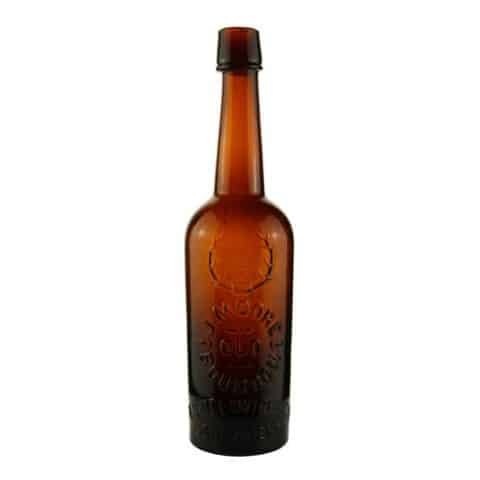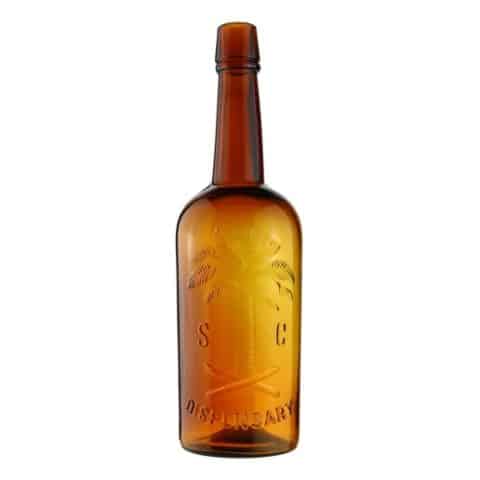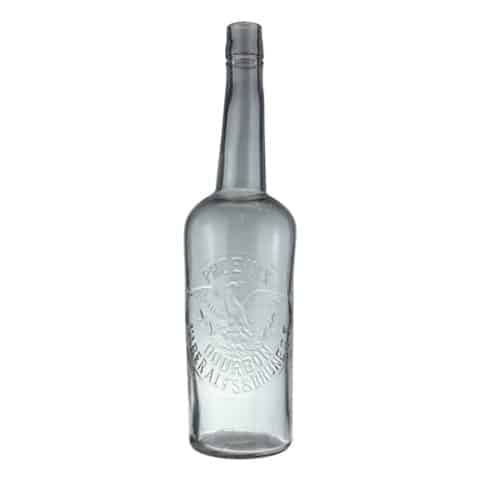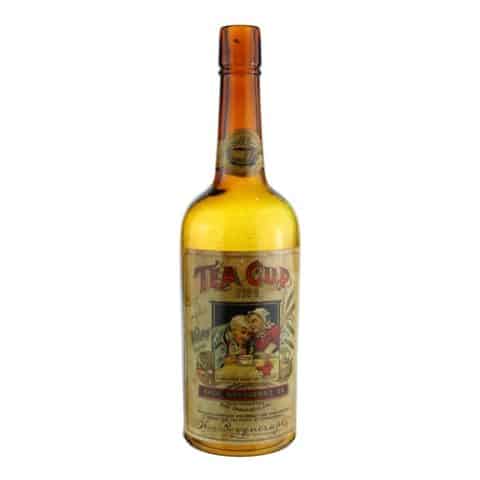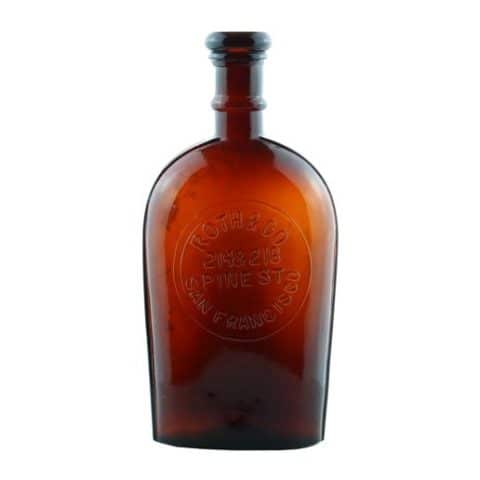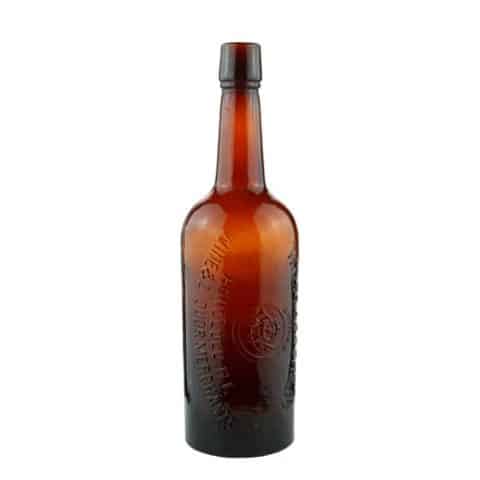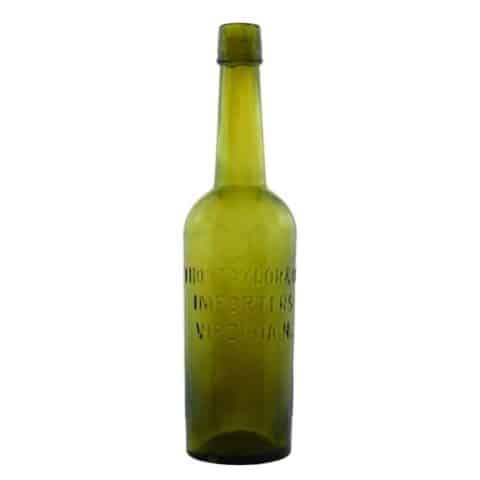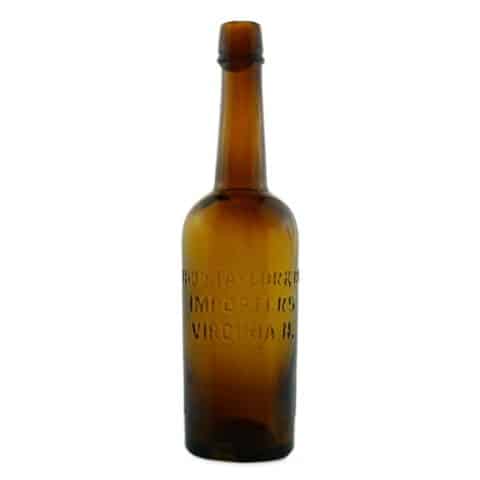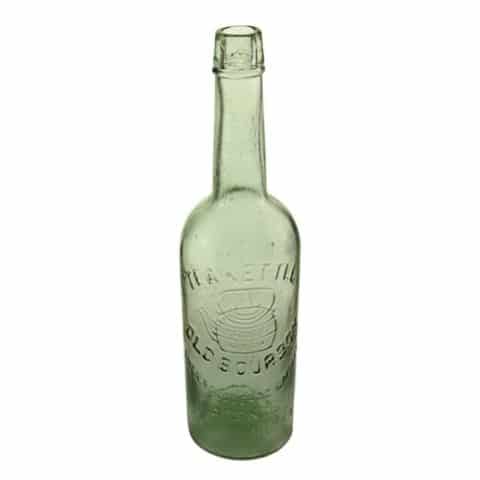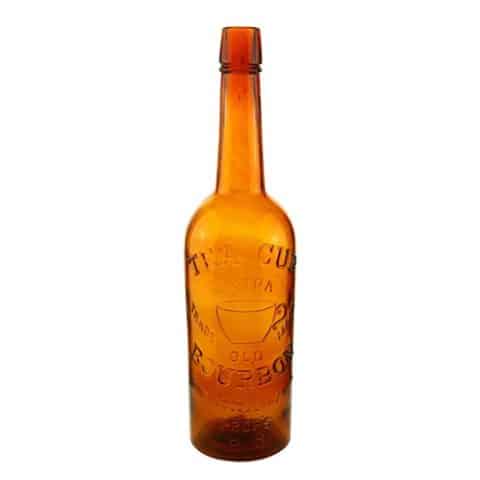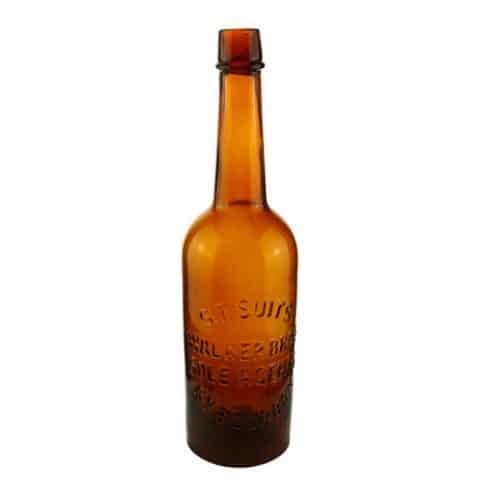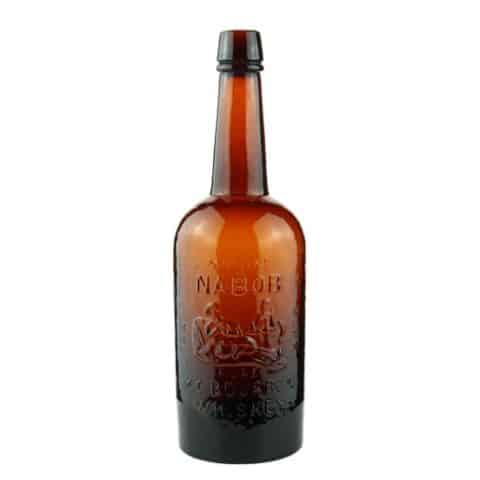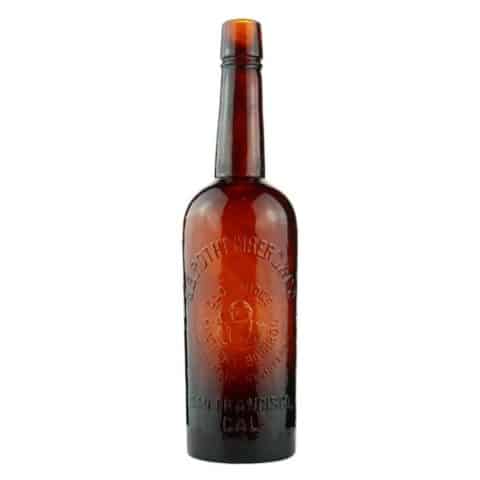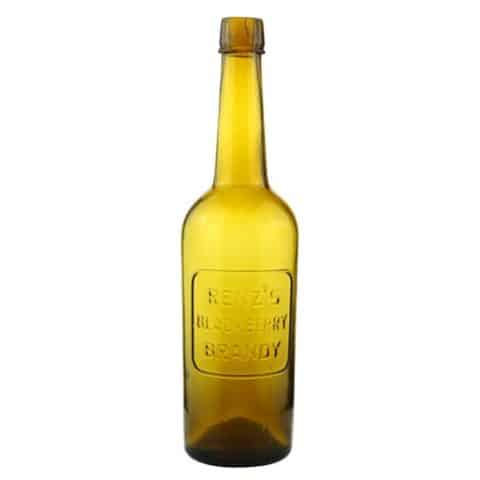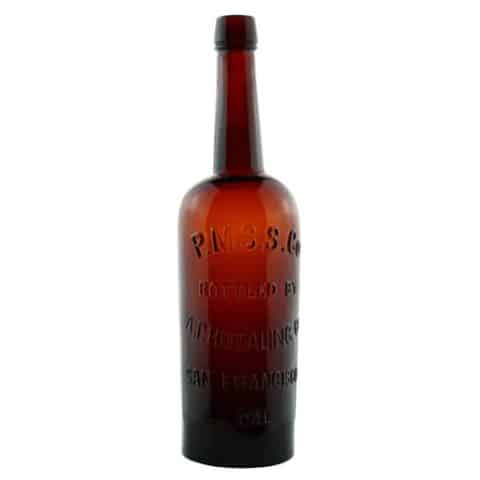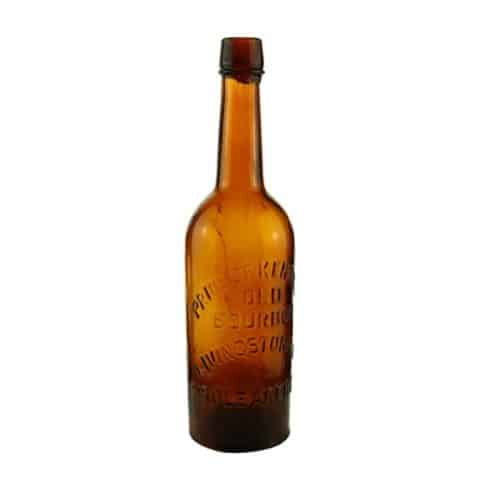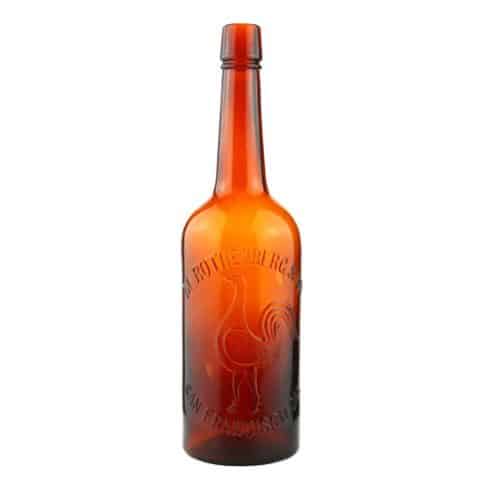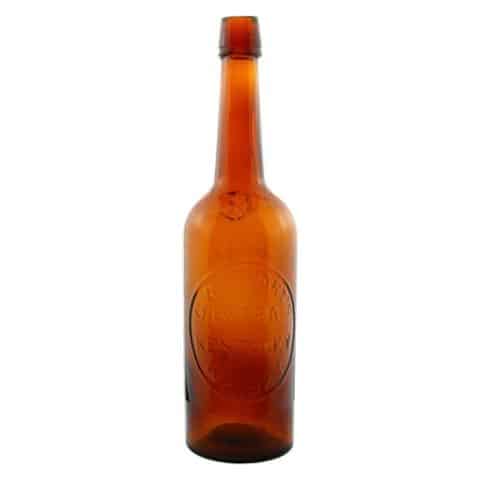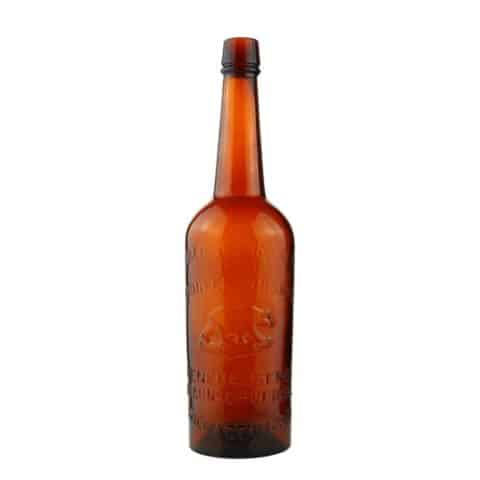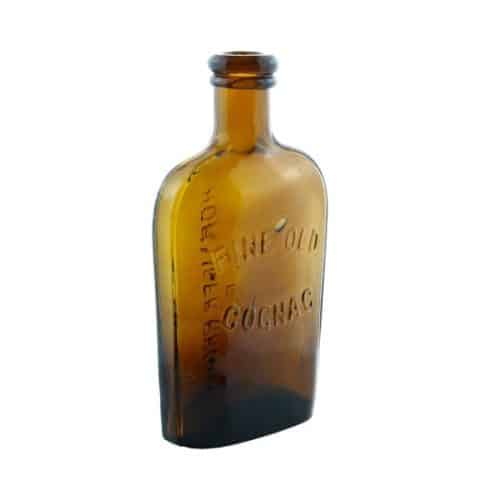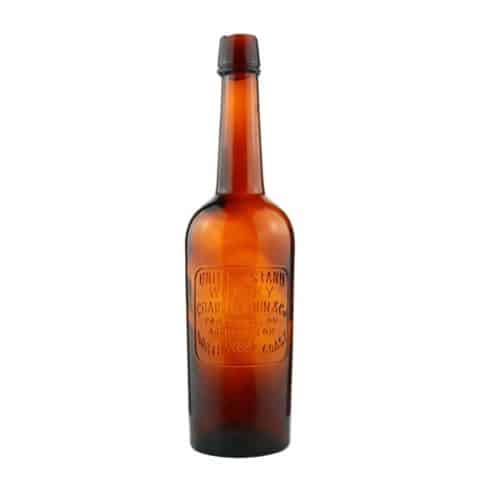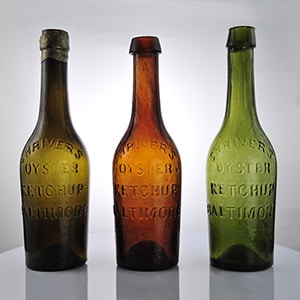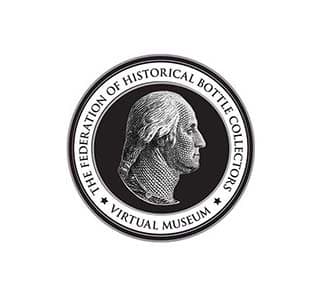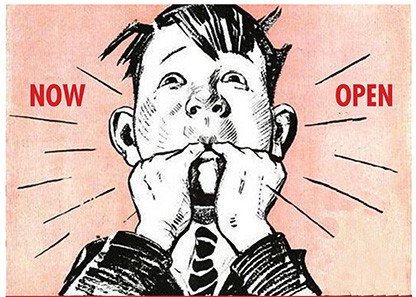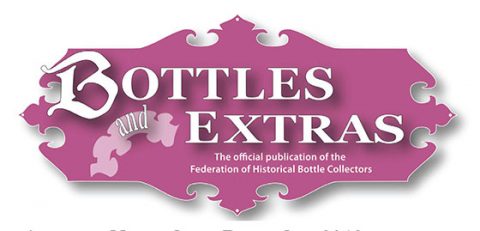S C Dispensary (Palmetto Tree Quart Cylinder)
S C Dispensary
(Palmetto Tree)
South Carolina Dispensary System
Amber Cylinder
Provenance: Mike Newman Collection
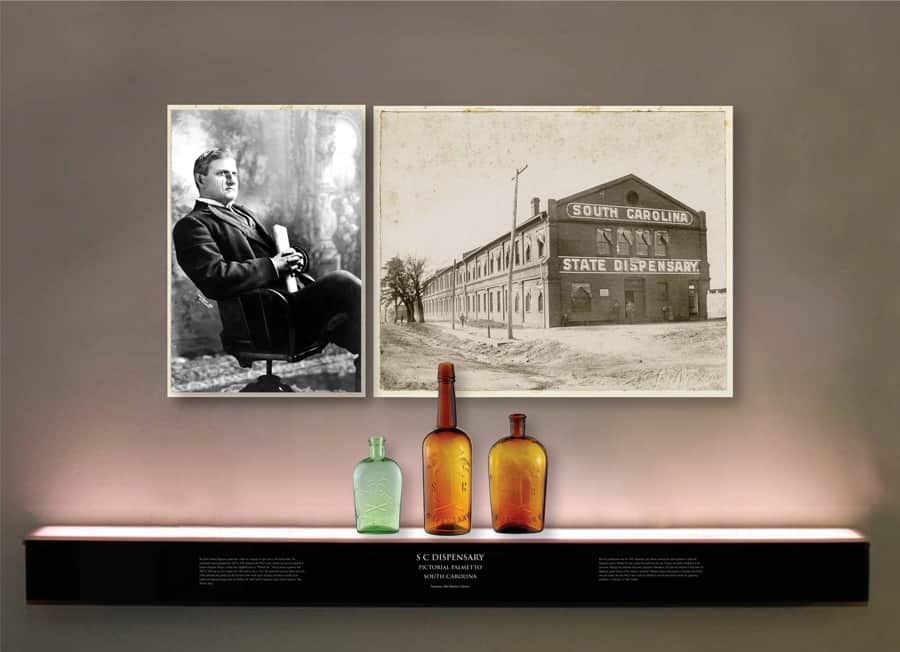
The South Carolina Dispensary system was a state-run monopoly on liquor sales in the United States. The controversial system operated from 1893 to 1907 statewide until 1916 and was the brainchild of Governor Benjamin Tillman, a farmer from Edgefield known as “Pitchfork Ben.” Tillman served as governor from 1890 to 1894 and as a U.S. Senator from 1895 until he died in 1918. This experiment had never before been tried at the state level and proved to be the last time a state would require all liquor sold within its borders to be bottled and dispensed through state-run facilities. The South Carolina Dispensary system became known as “Ben Tillman’s Baby.”

After the prohibitionists won the 1892 referendum, Ben Tillman convinced the state legislature to adopt the dispensary system, whereby the state received the profits from the sale of liquor and tightly controlled it at the same time. Although the prohibition forces won subsequent referendums, the state was reluctant to close down the dispensary system because of the revenue it generated. Religious reasons and proximity to Charleston (the farther away the county, the more likely it was to vote for prohibition) were the two primary reasons for supporting prohibition, or otherwise, in South Carolina.
The monopoly the state created was complete; the dispensary system controlled wholesale and retail sales through a state board of control, which consisted of the governor, comptroller general, and attorney general. Day-to-day administration was in the hands of a state commissioner appointed by the governor. The commissioner was charged with procuring all liquors to be bottled by the state dispensary and sold to county dispensaries. Preference was to be given to local brewers and distillers. Liquor bottled by the state dispensary was the only liquor to be sold legally in South Carolina.
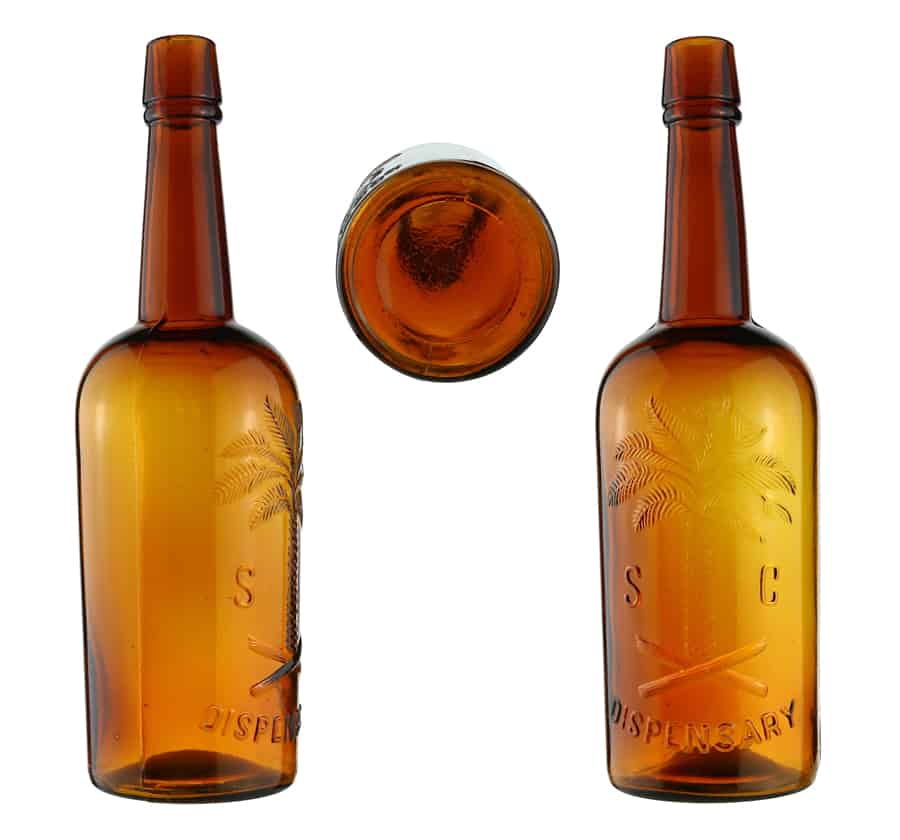
From 1893 to 1900, the bottles used by the dispensary had an embossed design featuring a palmetto tree with crossed logs under the base of the trunk, and from 1900 to 1907, an overlaying and intertwining “S C D” script design replaced the tree design. This was mainly because prohibitionists objected to having such a prominent state symbol as the palmetto tree embossed on liquor bottles.
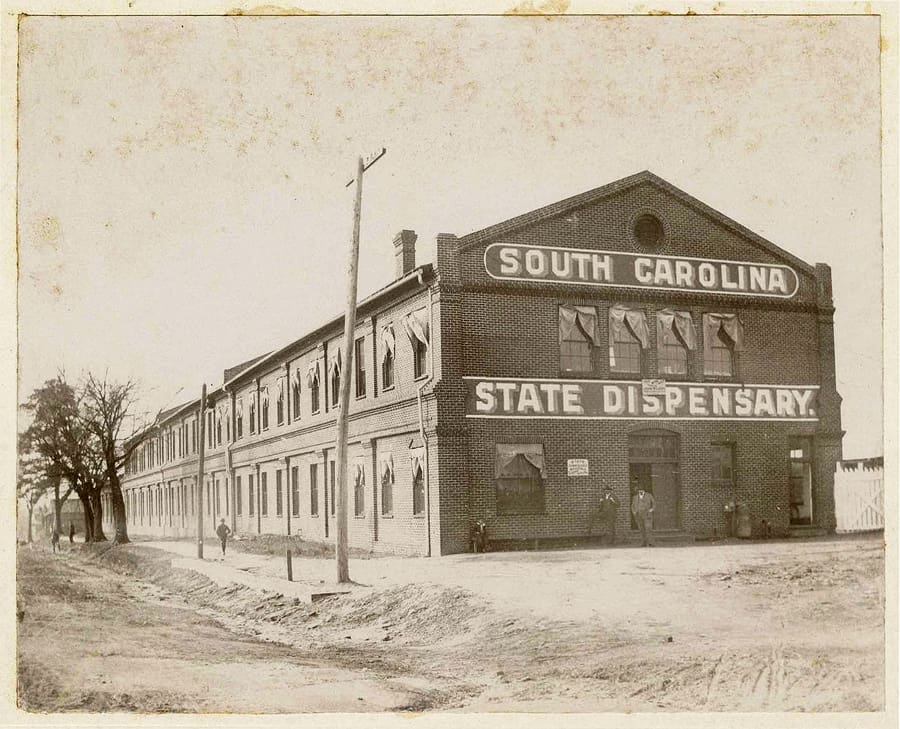
The corruption of the Dispensary as a political machine alarmed Progressive-era reformers, along with the church element that wanted complete prohibition. The General Assembly passed the Bryce law in 1904 that allowed counties to choose whether they would allow for the sale of alcohol. Many of the upstate counties voted to ban the sale of alcohol, and it was not too long before the General Assembly discussed the viability of the dispensary itself. In 1907, the Carey-Cothran law was passed that abolished the State Dispensary and provided for establishing dispensaries in every county that chose to remain wet.
The counties that operated dispensaries grew prosperous from the revenues generated by the sale of alcohol, but prohibitionist sentiment was irresistible, and in 1915, the dry counties sought to end the sale of alcohol throughout the state. A referendum held in the state on the question of prohibition saw two-to-one support from the voters, and the General Assembly subsequently enacted a law in 1916 to ban the sale of alcohol and limit importation from other states.
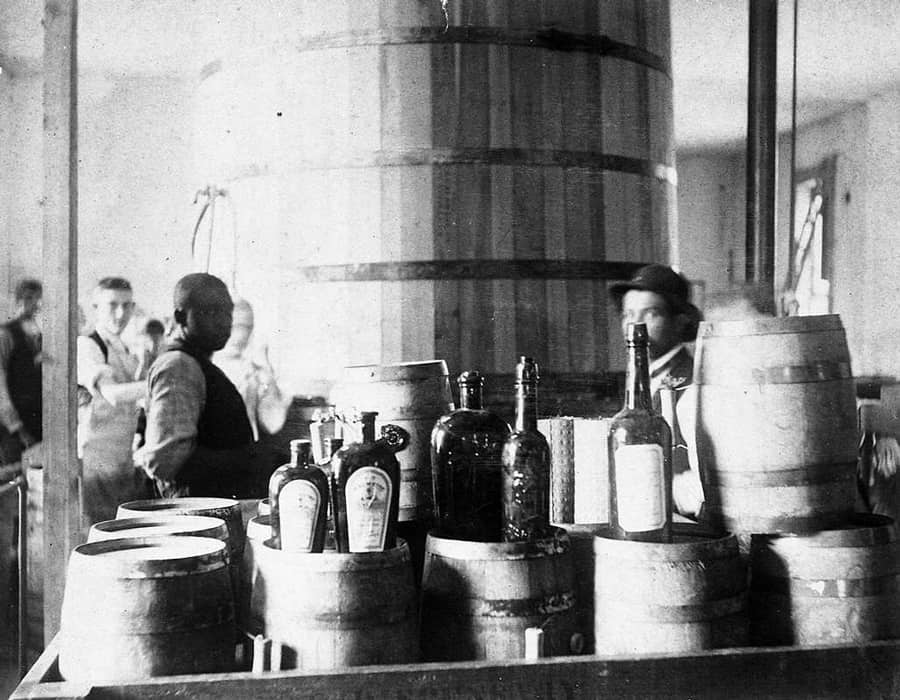
For the most part, all that remains of the South Carolina Dispensary are the glass bottles that were made to contain the alcoholic beverages to be sold. The bottles are treasured by collectors, not for their beauty of design or color but more as a link to an intriguing era in history.

See the museum example of a “S C Dispensary” citron flask (coming soon).
The most common type of S C Dispensary bottle is the “jo-jo” flask, which has flat panels front and back, rounded shoulders, and a rounding towards the base. These were made and used throughout the life of the dispensary system. Another type of flask, the union flask, was used until the turn of the 20th century, and none were made with the monogram design. Unlike the jo-jos, which all bore the “S C Dispensary” legend, unions bore both this and the “South Carolina Dispensary”. Half-pint, pint, and one-quart cylindrical bottles were also made and used.
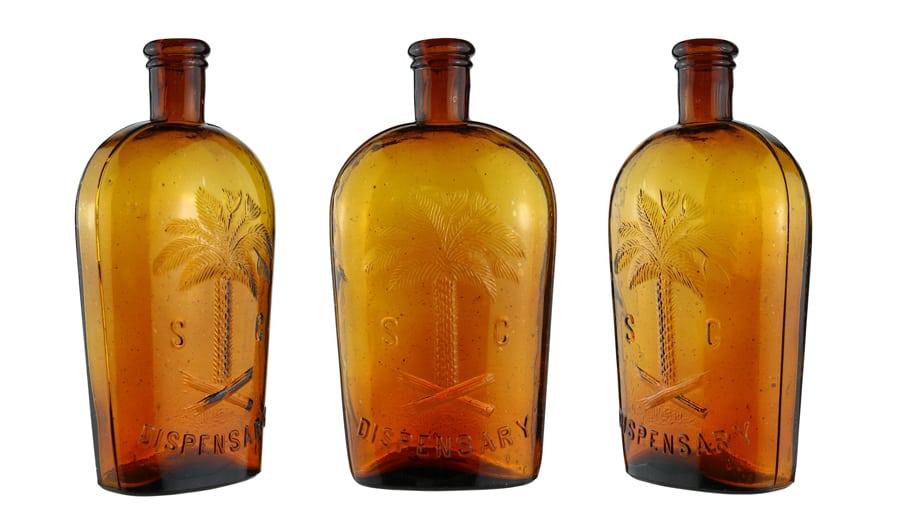
See the museum example of a “S C Dispensary” amber flask (coming soon).
Stoneware jugs were produced in two major variants. They consist of ones made in Edgefield District, South Carolina, and ones made in Virginia.
The South Carolina variations were made in half-gallon and gallon sizes, all were made from local clay with the palmetto tree and “S C Dispensary” stamped by hand after being wheel turned. In June 1893, the state purchased 2,118 half-gallon jugs and 2,046 one-gallon jugs from J. G. Baynham of Trenton at $217.35. The half-gallon jugs were 3.5 cents each, and the one-gallon jugs were 7 cents each. Baynham made the vast majority, but the Hahn(or Horne) family assisted with some of the production.
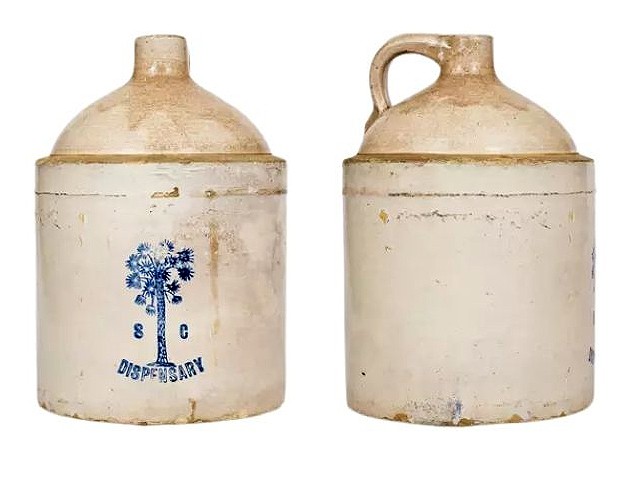
There are other non-typical bottle types, and some bottles that were not embossed were marked as a dispensary item by label only. A much sought-after item is the two-ounce capacity souvenir commemorative dispensary bottle made for the South Carolina Interstate and West Indian Exposition in Charleston, S.C., held in 1901–1902.
With different glass color varieties, glass manufacturers, and design nuances, many varieties of S C. Dispensary bottles are collected. Each bottle is unique due to being blown in a mold by a glassblower, as the Owens AR automatic bottle-making machine was not yet in widespread use.
Primary Image: Spinning “S C Dispensary” bottles imaged on location by Alan DeMaison, FOHBC Virtual Museum Midwest Studio.
Support: Reference to Early Sodas of the Carolinas The Bottles & Proprietors by David Kyle Rakes, October 2023.
Join the FOHBC: The Virtual Museum is a project of the Federation of Historical Bottle Collectors (FOHBC). To become a member.

